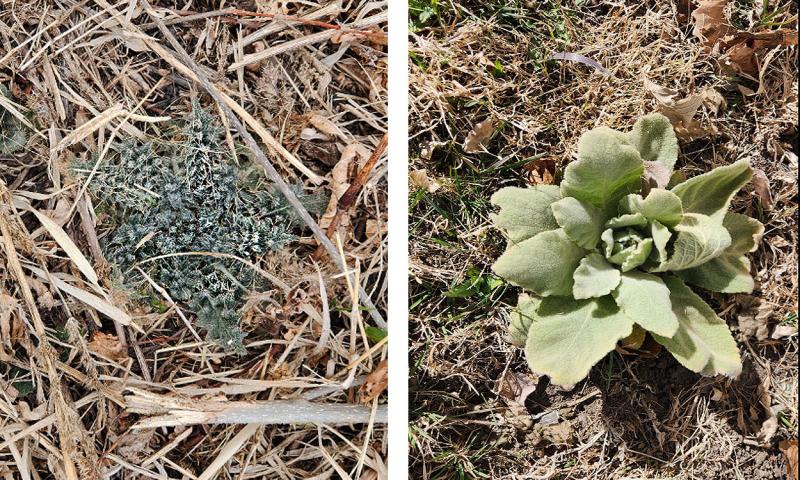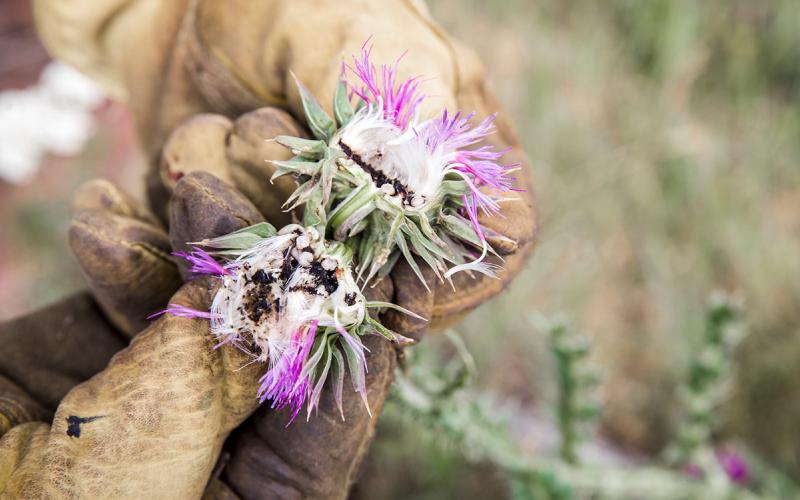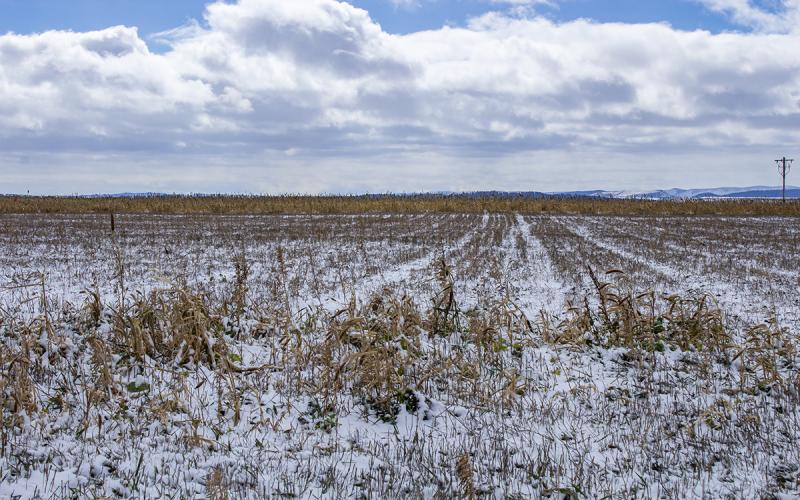
Written collaboratively by Eric Jones, Philip Rozeboom, David Vos, and Jill Alms.
The warmer weather this year has caused some biennial weed species to emerge earlier than normal. The common biennial species that have emerged are thistle species and common mullein (Figure 1). Other common biennial weeds include poison hemlock and wild parsnip. Biennial weed species have a two-year life cycle; the first year the plant grows in rosette, consisting of low-laying leaves, and the second year the plant elongates vertically to flower and then produce seeds. If managing these weeds with herbicides, the application needs to be made at the rosette stage before the stalk elongates (also referred to as bolting). Biennial weeds can be treated after bolting but may not be as effective. Mowing bolted weeds and applying an herbicide in the fall to new regrowth is a viable option as well. Mowing a flowering plant will cease seed production, but timing is critical, as some species can produce viable seeds shortly after flowering. Mowing will not be an effective tactic to manage biennial weeds in the first year, as the vegetation will be beneath the mower blades. However, mowing dense, desirable vegetation around the infestations of biennial weeds should be conducted to ensure that the herbicide droplets are being deposited on the weed rather than surrounding vegetation. While these weeds have emerged, herbicide applications should be made under desirable conditions that promote growth. This early in the spring, snow and cold temperatures can be realized. Weather conditions should be above freezing temperatures to ensure that the weeds are actively growing at the time of application.
Management efforts should be made to areas that have been historically infested with biennial weeds. However, the area of interest should be scouted regularly to determine if new infestations appear and the effectiveness of previously implemented management efforts. While biennial weed species are emerging now, be conscience of what other weed species have historically infested the area and will germinate later. Some herbicides will not be effective on select weed species. Refer to the SDSU Extension Noxious Weed Control Guide for a list of herbicides that are effective for each species.


